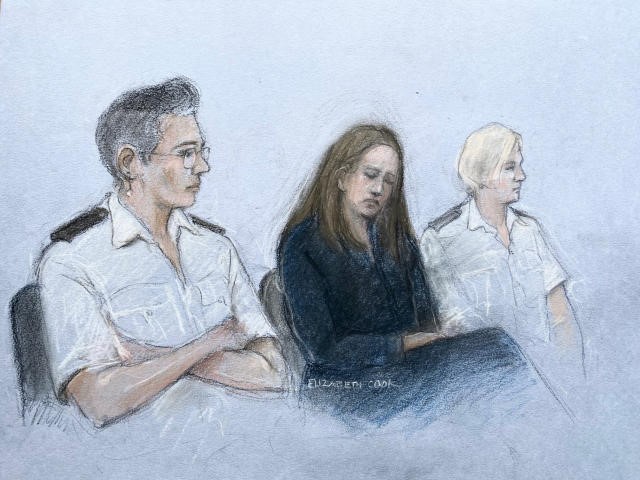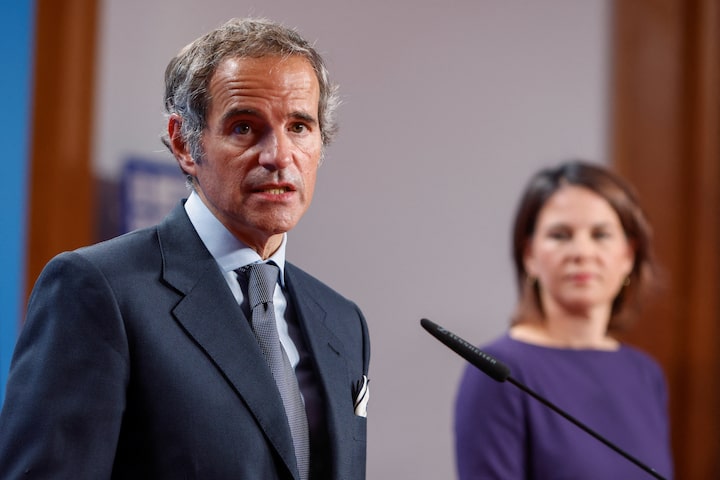LUCY LETBY
Lucy Letby, a former British nurse, found herself at the centre of an intensely publicised criminal case that sent shockwaves through both the medical community and the general public. Born on March 26, 1990, Letby pursued a career as a nurse at the Countess of Chester Hospital in Cheshire, England. Her journey, however, took an unexpected and dramatic turn when she was taken into custody in July 2018.
Letby’s arrest marked a pivotal moment that garnered widespread attention due to its gravity and implications. She faced a series of charges—eight counts of murder and ten counts of attempted murder—connected to a string of infant deaths that occurred within the hospital between the years 2015 and 2016. These allegations presented a deeply disturbing pattern that hinted at the possibility of intentional harm targeting some of the most vulnerable patients under her care.
The significance of this case transcended its legal aspects, sparking extensive discussions about a range of pertinent issues. It prompted a deep reflection on patient safety, ethical considerations in the medical field, and the profound responsibilities borne by healthcare practitioners. The allegations, if proven true, would not only signify a grave breach of trust but also challenge the fundamental role that nurses and medical personnel play in providing care to those in critical need.
Beyond the immediate legal proceedings, the Letby case fuelled conversations surrounding hospital protocols, patient monitoring systems, oversight mechanisms, and the broader implications for healthcare systems as a whole. Such high-profile instances often prompt the reassessment of existing practices, regulations, and policies to prevent future occurrences and ensure the utmost care and safety for patients.
Additionally, the case highlighted the importance of thorough investigations, striking a balance between the pursuit of justice and the protection of the rights of the accused. It also underscored the complex interplay between public interest, media coverage, and the duty to ensure a fair trial.
As the case continued to unfold, questions arose about Letby’s motives, potential warning signs, and whether systemic failures might have contributed to the tragic events. The intricacies of the case prompted a broader societal dialogue about the need for vigilance, accountability, and continuous improvement in the healthcare sector to prevent any lapses that might compromise patient well-being.
The case raised numerous questions and concerns about patient safety, medical ethics, and the responsibilities of healthcare professionals. The alleged actions, if proven true, would represent a breach of trust that’s difficult to fathom, given the fundamental role that nurses, and medical staff play in caring for those who are most in need.

The outcomes of the trial involving Lucy Letby establish her identity as the perpetrator behind the most heinous acts of child harm in Britain.
Over the course of approximately a year, Letby, a neonatal nurse, inflicted fatal harm on the most defenceless infants in her care, inflicting immeasurable anguish upon their families.
The progression of her criminal actions and the eventual process of bringing her to justice are recounted here, detailing the onset of her misconduct and how her colleagues eventually raised the alarm despite the unthinkable reality they had to confront.
Baby A:
Baby A was a twin boy cared for in the neonatal intensive care unit at the Countess of Chester Hospital. On June 8, 2015, he suddenly stopped breathing. Despite medical staff’s efforts to resuscitate him for over half an hour, he couldn’t be saved and was pronounced dead at 8:58 p.m. Lucy Letby, the nurse in charge of his care during his final hours, created a memory box for his parents. The cause of his sudden deterioration remained a mystery, but his case became a starting point for unravelling Letby’s series of attacks.
Baby B:
Baby B was Baby A’s twin sister. Only 27 hours after Baby A’s death, Baby B, who had been rallying, suddenly collapsed. Medical intervention stabilised her, but the reason for her rapid deterioration remained unclear. Colleagues noticed Letby’s consistent presence during these critical moments. Her attempts to harm these infants were marked by similar patterns of behaviour, making Baby B another victim of her attacks.
Baby C:
Baby C was born prematurely at just 30 weeks and weighed less than two pounds. Despite his difficult circumstances, he initially showed promise. However, his heart rate and oxygen levels suddenly crashed after four days, leading to his death. A post-mortem examination initially attributed his death to natural causes. Later, it was determined that air pumped into his stomach caused his diaphragm to shift, preventing his lungs from inflating. This revelation linked Letby to Baby C’s demise.
Baby D:
Baby D was a baby girl in the neonatal unit due to an infection. On the night of June 21, 2015, she collapsed three times and ultimately could not be resuscitated. Medical experts discovered that Letby had made three attempts on her life by injecting air into her bloodstream. This case highlighted the consistent pattern of Letby’s attempts to harm infants under her care.
Baby E:
Baby E, a baby boy, was part of a set of identical twin boys. Born prematurely, he initially did well in the neonatal unit. However, Letby’s intervention led to a sudden decline. On August 4, 2015, Baby E screamed with blood coming from his throat. Despite medical efforts, he couldn’t be saved, with experts later concluding that Letby had forced equipment down his throat and pumped air into his stomach. Baby E’s tragic death revealed Letby’s persistence in her harmful actions.
Baby F:
Baby F experienced low blood sugar levels after birth and required a nutrient drip. Unexplainedly, his blood sugar levels continued to drop. Analysis revealed high levels of synthetic insulin, indicating tampering with the feed bags. Fortunately, Baby F survived, but this case showcased Letby’s continued use of insulin to harm infants.
Baby G:
Baby G, the most premature of the babies involved, was born with a difficult pregnancy and a slim chance of survival. She suffered violent vomiting and collapses. Letby’s attempts to overfeed her with milk and inject air into her stomach were discovered. Baby G’s severe health consequences demonstrated the devastating impact of Letby’s actions.
Baby H and Baby I:
These cases involved Baby H and Baby I, both born prematurely. Letby was found not guilty in one case and convicted in another, illustrating the complexity of proving intent in some instances.
Baby J:
Baby J suffered seizures, and Letby was alleged to have smothered her. The jury was unable to reach a verdict in this case, showcasing the challenges of establishing guilt in certain situations.
Baby K:
Baby K was extremely premature and died of unrelated complications. The jury could not reach a verdict on whether Letby attempted to kill Baby K.
Baby L and Baby M:
Born as identical triplets, Letby attempted to harm Baby L and Baby M. Although Baby L survived, Baby M suffered permanent brain damage due to Letby’s actions.
Baby N:
Baby N had haemophilia and was born prematurely. Letby’s interest in the infant’s blood condition raised suspicions. She attempted to obstruct his airways, but he survived.
Baby O and Baby P:
Letby’s actions led to the deaths of Baby O and Baby P, two of a set of identical triplets. Baby O’s death was attributed to natural causes, while Baby P’s death was linked to her actions. The deaths of these two babies were significant turning points in the investigation.
These detailed accounts shed light on the tragic events involving each baby affected by Lucy Letby’s actions, highlighting the distressing and complex nature of her crimes.

In such high-profile cases, public interest often extends beyond the immediate legal proceedings. Discussions arose about hospital protocols, monitoring of patients, the role of oversight, and the broader implications for healthcare systems. The case also highlighted the importance of thorough investigations and the balance between ensuring justice is served and protecting the rights of the accused.
In the aftermath of such high-profile cases, societies often experience a heightened awareness of the critical nature of medical care and the profound responsibility of those entrusted with it. The Letby case serves as a poignant reminder of the importance of upholding the highest standards of professionalism, compassion, and integrity within the healthcare field.
Sources
- https://www.telegraph.co.uk/news/2023/08/18/lucy-letby-baby-deaths-countess-chester-timeline/
- https://www.bbc.com/news/uk-england-merseyside-65058159
- https://www.theguardian.com/uk-news/2023/aug/25/ministers-indicate-support-for-statutory-inquiry-into-lucy-letby-killings
- https://www.dailymail.co.uk/news/article-12443109/We-trusted-Lucy-Letby-wanted-babys-godmother-think-tried-kill-him.html
- https://www.dailyrecord.co.uk/news/uk-world-news/psychologist-reveals-lucy-letbys-parents-30789268




